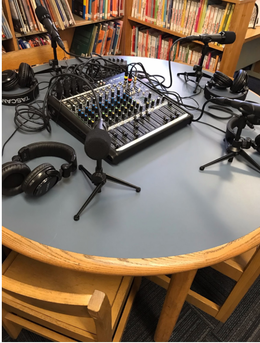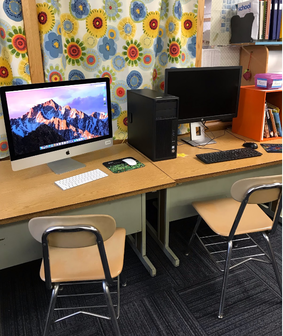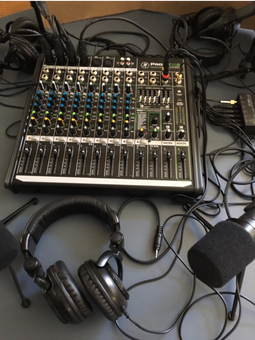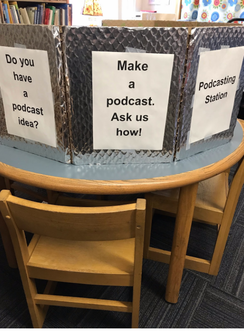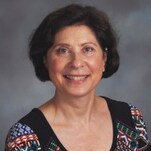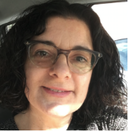 Karen Sekiguchi, Winthrop School Librarian
Karen Sekiguchi, Winthrop School Librarian Librarian: Karen Sekiguchi
In the 2016-2017 school year, Winthrop School, a PreK-5 elementary school in Ipswich, purchased new computers and podcasting equipment to create a media production center in the library. Winthrop has encouraged content creation vs. consumption over the years by providing cameras of all types to students and teachers, but the school did not have a dedicated space for working on multimedia projects.
| Last year, as we discussed possible locations for our studio, we decided that it should be in a place where the equipment could be left out as an open invitation for anyone, students or teachers, to use. Since Winthrop School was built in the 1950s, long before media production for all was a possibility, our space choices were limited. Closets and offices were considered but ruled out because they were taken, or small, or lacking in outlets. The library turned out to be our best option, but for many reasons, it was not the ideal location. The Winthrop library is a 1600 sq ft space used by many groups throughout the day. It is noisy and busy and filled-to-the-brim with furniture and books. (Did I mention the giant plants/trees?) However, we had to make it work. First, we moved out twelve desktop computers that took up an entire section of our limited floor plan. Then we cleaned out shelves and storage bins. Then we moved a tree. Then we selected one of our round library tables to be used as the podcasting center. Finally, we set up our new 25” screens/computers (one PC and one Mac) where the desktops had been. Voila, production “studio.” |
| Yes, it’s noisy and part of the main space, and sometimes you can hear voices in the background of our podcasts even if we ask for “quiet on the set.” Fortunately, some audio problems can be fixed in Audacity, the free program we use to mix the recordings. Since last May when the studio opened, we’ve completed several interesting projects. During library classes we’ve recorded a podcast series for our digital citizenship unit. Teachers have recorded podcasts to model writing assignments for their students. Students have read and recorded their essays and research. This year, we are asking students to visit the studio to record original songs and poetry or readers’ theater. We are enthusiastically open for business! While I have been the one recording and mixing the podcasts so far, I have started to train teachers and students who can run their own sessions. We are actively promoting podcasting to all grades. Our principal and school nurse have been training students to film and edit, and several film and green screen projects have been completed so far this year, both during school and in after-school clubs. |
| We’ve learned that a media studio doesn’t have to be fancy--in our case it’s an open corner in the library--but it does help to have a welcoming attitude and a willingness to try something new. In the short time since we’ve opened our (non-existent) doors, the media studio has brought more traffic to the library and has allowed for more interaction and collaboration between the librarian and classroom teachers. It has empowered both students and teachers to be creators, and as more teachers have realized its potential, use of the new equipment has continued to grow. In a short time, the media studio has become a real game changer, not only for the library, but for the entire school. |

